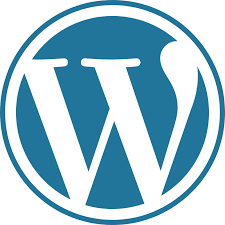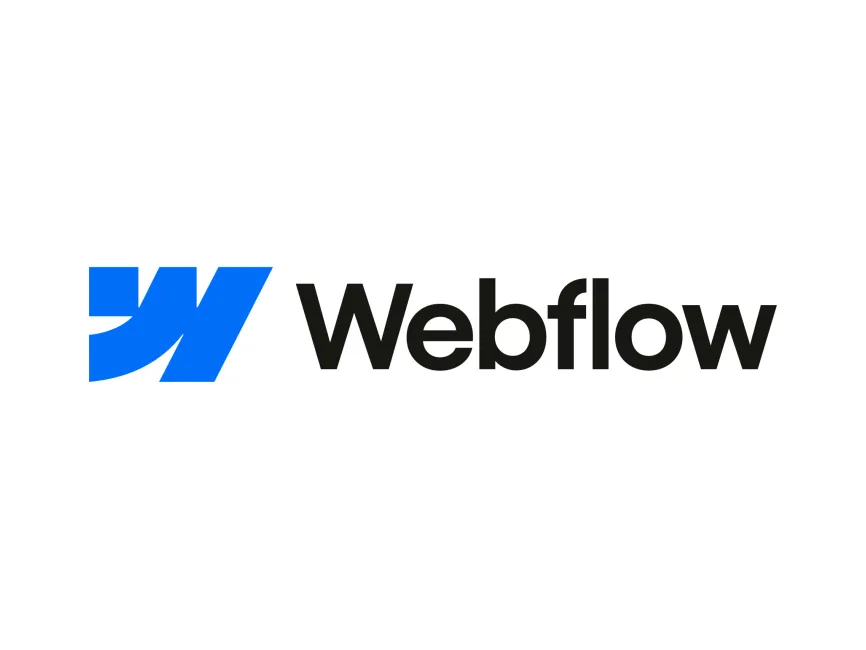Choosing between WordPress and Webflow ultimately depends on your specific needs. WordPress offers unparalleled flexibility, versatility, and a vast ecosystem of plugins. Webflow boasts intuitive design tools and streamlined hosting, making it a strong contender for designers and smaller projects. Explore with us more features of each CMS below to make the best choice for you.

- What is a content management system?
- Briefly introducing WordPress & Webflow
- WordPress vs Webflow which is better for eCommerce?
- WordPress vs Webflow which is better for blogging?
- WordPress vs Webflow which is better for animations?
- WordPress vs Webflow pros & cons
- WordPress vs Webflow comparison table
- TL;DR: Recapping key points comparing WordPress vs. Webflow
WordPress vs. Webflow stands as two formidable contenders, each boasting distinct features and functionalities. Aspiring creators and seasoned developers alike often find themselves at the crossroads, deliberating over which platform reigns supreme for their unique needs.
In this comprehensive exploration, we delve deep into the realms of WordPress and Webflow. Thus dissecting their strengths, weaknesses, and suitability across various scenarios. Whether you’re a blogger seeking simplicity or an entrepreneur craving customization, this guide aims to unravel the enigma surrounding these two powerful CMS platforms. So, buckle up as we embark on a journey to decipher which among WordPress and Webflow emerges as the ultimate champion in the realm of website creation.
What is a content management system?
A content management system (CMS) is a software application used to create, manage, and modify digital content without requiring specialized technical knowledge. It provides users with a user-friendly interface to organize, edit, and publish content such as text, images, videos, and documents on websites or other digital platforms.
CMS platforms streamline the process of content creation and publication by allowing multiple users to collaborate, schedule content updates, and manage permissions. Popular examples of CMS include WordPress, Webflow, Joomla, Drupal, and Wix, each offering various features tailored to different user needs.
Importance of choosing the right CMS for your website
It is important to choose the right CMS for your website needs. You want a CMS that can help you meet your business goals.
WordPress is the most popular on the internet
WordPress CMS platform is the most popular currently on the internet. It makes up over 44 percent of all internet websites. As a CMS has gained it’s popularity for several reasons, some of them include:
- Easy-to-use dashboard
- Various website-building tools like Gutenberg
- Suitable for eCommerce
- SEO capabilities & tools
And so much more. Its open-source nature fosters a vibrant community of developers who continuously contribute to its improvement, ensuring security, performance, and scalability. The extensive documentation and support forums further enhance its appeal. Therefore, WordPress is the top choice for millions of website creators worldwide.
Webflow a modern website-building solution
Webflow CMS stands out as a modern solution in the web development landscape due to its seamless integration of content management and web design capabilities. It empowers users with the ability to create dynamic and visually stunning websites without the need to write a single line of code, making it a pioneer in the realm of no-code web-building platforms.
With its intuitive drag-and-drop interface and extensive library of customizable templates and elements, Webflow streamlines the website creation process, allowing users to focus on design and content rather than technical implementation.
Its robust CMS features enable effortless content management, providing users with the flexibility to update and organize their site’s content with ease. Through its responsive design tools and powerful hosting infrastructure, Webflow ensures that websites built on its platform are not only visually appealing. But also performs seamlessly across all devices, making it an ideal choice for both novice users and seasoned professionals alike.
Briefly introducing WordPress & Webflow
Let’s go over the similarities and differences between WordPress and Webflow. Some areas that are worth looking into for these two CMS platforms include ease of use, design, security features, and more. Explore the details with us below.

Ease of use
WordPress is renowned for its user-friendly interface, making it accessible to both beginners and experienced users alike. With its intuitive dashboard, users can effortlessly navigate through menus to create, customize, and manage their websites. The extensive range of themes and plugins further enhances the ease of use, allowing users to tailor their sites to their specific needs without extensive coding knowledge. Additionally, WordPress offers extensive documentation and a supportive community, ensuring that users can find assistance and resources whenever needed.
Webflow, on the other hand, offers a powerful website design platform with a visually appealing interface that empowers users to create stunning websites without writing a single line of code. While Webflow provides a range of intuitive design tools and templates, there is a notable learning curve associated with mastering its more advanced features and functionalities. Users may initially find themselves spending time familiarizing themselves with the platform’s intricacies.
However, once proficient, Webflow offers unparalleled flexibility and control over website design, making it a favorite among designers and developers looking to create sophisticated and custom websites.
Design and Customization
WordPress
WordPress offers a vast landscape of design and customization possibilities, making it a preferred choice for website building. With an extensive array of themes and plugins, users can tailor their websites to match their unique vision and brand identity effortlessly. Custom themes provide the foundation, offering a range of layouts and styles to suit various industries and preferences, while plugins extend functionality, enabling everything from e-commerce integration to advanced SEO optimization.
Moreover, WordPress’s intuitive interface empowers users to tweak design elements, such as colors, fonts, and layouts, without requiring extensive coding knowledge. For those seeking more control, WordPress’s open-source nature allows developers to delve into the code, crafting bespoke solutions tailored precisely to their needs. Whether it’s a sleek portfolio, a bustling online store, or a vibrant blog, WordPress empowers users to create and customize their digital spaces with unparalleled flexibility and ease.
Webflow
Webflow stands out in the realm of website building for its exceptional design and customization possibilities. Offering a visually intuitive interface coupled with powerful tools, Webflow empowers users to bring their creative visions to life with precision and efficiency. Its extensive library of customizable templates serves as a starting point, catering to a wide range of industries and design aesthetics. From there, users can dive into the robust design editor, where every element can be fine-tuned to perfection, from layout and typography to animations and interactions.
With the ability to create custom animations and transitions without code, Webflow enables designers to craft truly immersive experiences that captivate and engage visitors. Additionally, its flexible CMS allows for seamless content management, empowering users to update and iterate on their websites with ease. Whether it’s a sleek portfolio, a dynamic e-commerce platform, or a responsive corporate site, Webflow provides the tools and flexibility needed to realize any design vision, making it a preferred choice for designers and developers alike.
Flexibility and Scalability
WordPress and Webflow represent two distinct paradigms in the realm of content management systems (CMS). WordPress, renowned for its widespread adoption and open-source nature, offers unparalleled flexibility in terms of website content management. With its extensive library of plugins and themes, a WordPress site can be tailored to meet almost any need, from simple blogs to complex e-commerce platforms. However, as the site grows in complexity, managing scalability can become challenging, often requiring optimization and careful plugin selection to maintain performance.
On the other hand, Webflow, with its intuitive visual interface and integrated hosting, provides a more streamlined approach to web design and development. While not as extensible as WordPress in terms of plugins, Webflow offers greater control over layout and design without sacrificing performance. In essence, while WordPress excels in flexibility, Webflow shines in scalability, catering to different needs within the spectrum of website development.

Search Engine Optimization
When it comes to SEO for WordPress versus Webflow, both platforms offer robust features for optimizing websites, but with distinct approaches. WordPress, renowned for its user-friendly interface and extensive plugin ecosystem, provides numerous options to create and manage content seamlessly. Its array of SEO plugins such as Yoast SEO or All in One SEO Pack offers comprehensive tools for optimizing content, from keyword analysis to metadata customization. WordPress’s intuitive content management system facilitates the organization and publication of content, enhancing user experience and search engine visibility.
On the other hand, Webflow, with its powerful design capabilities, offers a visually oriented approach. This approach is useful for the user looking to create content and manage content. Webflow’s built-in SEO tools enable users to optimize content directly within its intuitive design interface, streamlining the process of content creation and management for a visually-driven audience. Ultimately, the choice between WordPress and Webflow for SEO depends on the user’s preference for either a plugin-rich environment or a visually-driven design platform.
Security
Securing a WordPress website is paramount for safeguarding against potential threats. Regularly updating the WordPress core, plugins, and themes is fundamental, as it patches vulnerabilities and strengthens defenses against emerging risks. Furthermore, custom code can enhance security measures tailored to specific needs.
Implementing security plugins like WordFence provides an added layer of protection by acting as a firewall and detecting malware, thus fortifying the website’s resilience against attacks. Additionally, bolstering login pages with two-factor authentication significantly reduces the risk of unauthorized access. Thus ensuring robust protection for WordPress sites and their valuable content.
When it comes to security, Webflow takes several measures to ensure the safety of websites built on its platform:
- SSL encryption
- DDoS protection
- Regular Updates and Patches
- Secure Hosting Infrastructure
- Secure Authentication
- Data Backups
While Webflow takes these measures to enhance security, it’s important for website owners to also follow best practices for web security. Best practices such as using strong passwords, keeping software up to date, and being cautious about third-party integrations.

Pricing and Cost
When considering the pricing and cost of a WordPress site, it’s crucial to account for various factors, including hosting, themes, plugins, and a custom domain. While WordPress itself is free to use, expenses can arise from hosting fees, which vary depending on the provider and the plan’s features.
Additionally, premium themes and plugins may come with one-time or recurring costs. Thus contributing to the overall investment. Incorporating a custom domain, essential for branding and professionalism, typically involves an annual registration fee. However, prices can differ based on the domain registrar and the domain extension chosen. Balancing these expenses ensures a well-rounded and effective WordPress site within budget constraints.
When delving into the pricing and cost structure of Webflow, it’s essential to understand the value it offers for web design and development. Webflow provides a range of subscription plans tailored to different needs, from individual designers to large-scale businesses. These plans vary in features such as:
- the number of projects allowed,
- custom code capabilities,
- and e-commerce functionalities.
While Webflow’s basic plan offers a solid foundation for personal projects or smaller businesses, more advanced features like white-labeling and site password protection are available in higher-tier plans. Additionally, Webflow’s hosting services are included in all plans. So you don’t need to find hosting. Thus simplifying the process of publishing and managing websites.
Overall, the pricing of Webflow reflects its comprehensive suite of tools for creating responsive and visually stunning websites, ensuring flexibility and scalability for diverse projects.
Support and Community
Let’s get into the support & community that exists for both of these CMS platforms. WordPress has been around for as long as it has, a huge community and support group online. It boasts a robust support network and a vibrant community that sets it apart as one of the most widely used content management systems (CMS) in the world. There are various forums, resources, chats, etc. available for users to help each other on their website-building journey.
Webflow offers support through various channels such as email, live chat, and a comprehensive knowledge base. You can reach out to their support team for assistance with technical issues, account inquiries, or general questions about using the platform. Moreover, it has an active community forum where users can ask questions, share tips and tricks, and discuss all things related to Webflow. Finally, Webflow has a university with extensive tutorials, courses, and resources. Whether you’re a beginner or an experienced user, you can find valuable educational content to help you master the platform and build stunning websites.

WordPress vs Webflow which is better for eCommerce?
WordPress and Webflow are both suitable as eCommerce platforms. When it comes to WordPress, eCommerce is made possible with WooCommerce a WordPress plugin. It offers extensive features for building online stores. It provides a range of themes and plugins to customize your store, along with various payment gateways and shipping options. WordPress also offers a vast ecosystem of plugins and extensions for additional functionality.
Webflow, you can buy a plan that is specifically dedicated to eCommerce. You are able to design, build, and launch responsive websites without writing code. It offers a user-friendly interface and powerful design tools. Thus making it an attractive option for those who want more control over the design aspect of their eCommerce site. Webflow also provides hosting and CMS capabilities, streamlining the development process. But with Webflow there is a much higher learning curve than with WordPress.
Ultimately, the better option for eCommerce depends on your specific requirements, such as design preferences, technical expertise, scalability needs, and budget.
WordPress vs Webflow which is better for blogging?
Both WordPress and Webflow have their merits for blogging, depending on your needs and preferences. WordPress, as one of the most popular content management systems globally, offers a vast array of plugins and themes tailored specifically for bloggers. Its intuitive interface and robust blogging features make it a go-to choice for many.
On the other hand, Webflow’s visual design tools provide unparalleled flexibility in creating stunning, custom websites, including blogs. Its clean code output and responsive design capabilities appeal to bloggers who prioritize aesthetics and design control. Ultimately, the choice between WordPress and Webflow boils down to a few factors. Factors like technical proficiency, design preferences, and desired level of customization.
WordPress vs Webflow which is better for animations?
Both WordPress and Webflow offer tools for creating animations, but they have different approaches and capabilities. Let’s start with WordPress first:
- There are various plugins available for adding animations to WordPress websites, such as WP Animation, Animate It!, and others.
- However, creating complex animations directly within WordPress might require coding or using additional tools.
Now we can move on to Webflow:
- It has built-in support for animations and interactions, allowing you to create sophisticated animations without needing to write code.
- Webflow’s interface is designed specifically for designers and developers, offering precise control over animations and interactions.
- It provides a range of pre-built animations and effects, along with the ability to create custom animations using its intuitive interface.
So which one is better? Well, if you’re looking for a simpler solution and already have a WordPress website, you can explore animation plugins. However, if you prioritize design flexibility and want to create advanced animations without coding, Webflow would be a better choice.
WordPress vs Webflow pros & cons
Let’s quickly go over some of the pros and cons of WordPress vs Webflow.
Pros & cons of WordPress
WordPress like any content management system has advantages and disadvantages. We will go through them so that you can make a more well-rounded decision.

Pros of WP CMS
The two top pros of WordPress are it’s easy to use and the huge plugin ecosystem.
Ease of use
WordPress offers unparalleled ease of use with its intuitive interface. Thus allowing users to effortlessly create and manage content without the need for extensive technical knowledge. Its robust ecosystem of plugins further enhances usability, enabling customization and extending functionality with just a few clicks.
Plugin ecosystem
WordPress boasts a vast plugin ecosystem, providing users with endless possibilities to enhance their websites with additional features and functionalities tailored to their specific needs. From SEO optimization to e-commerce solutions, the diverse range of plugins empowers users to customize their WordPress sites with ease.
Cons of WordPress
Unfortunately, a con of WordPress that comes to many people’s mind, is security issues.
Security concerns
While WordPress is a popular web-building platform, it does face security concerns. This is due to its widespread usage and open-source nature, which can attract malicious actors. However, with consistent updates and diligent maintenance, WordPress can remain a secure platform. Developers continuously patch vulnerabilities and provide security enhancements to protect users’ websites.

Pros & cons of Webflow
Now let’s dive into the world of benefits and disadvantages of using Webflow to build your website.
Pros of using Webflow
Some common benefits of using Webflow are that hosting is included and the design flexibility one has with this platform.
Hosting included
Hosting included in Webflow offers seamless integration with the platform’s design and CMS features. Thus ensuring a smooth workflow from creation to publication. This all-in-one solution eliminates the hassle of managing separate hosting services. Therefore, saving time and simplifying the website management process for users.
Design flexibility
Webflow empowers users with unparalleled design flexibility. Thus, allowing them to create unique and customized websites without the limitations of templates. Its intuitive visual editor and extensive design tools enable precise control over every aspect of the site’s appearance. So you can ensure it perfectly reflects your vision.
Cons of Webflow
Now let’s move into the disadvantages of Webflow. Since Webflow is a no-code website content management system there is a learning curve. This learning curve can be frustrating for some users.
Learning curve
The learning curve in Webflow can be a disadvantage for beginners. This is due to its advanced features and complex interface, which may require time to master. New users might find themselves overwhelmed by the platform’s intricacies initially, necessitating patience and dedication to fully leverage its capabilities.
WordPress vs Webflow comparison table
Check out this table comparing WordPress vs Weblow, to gain a quick snippet of all the important factors to consider when picking a CMS platform.
| Feature | WordPress | Webflow |
|---|---|---|
| Ease of use | User-friendly, but may require some technical knowledge for customization | Intuitive visual interface, suitable for beginners without coding knowledge. But there is a learning curve |
| Hosting | Requires self-hosting or third-party hosting service | All-in-one hosting provided by Webflow |
| Flexibility | Highly customizable with thousands of themes and plugins available | Limited flexibility compared to WordPress, but still offers extensive customization options |
| Design control | Limited design control without coding knowledge, dependent on themes and page builders | Full design control with a visual editor, no coding required |
| SEO | SEO-friendly with plugins like Yoast SEO, offering extensive optimization options | Built-in SEO features with customizable meta tags, clean HTML markup, and fast loading times |
| eCommerce | Supports e-commerce with plugins like WooCommerce, offering robust online store functionality | Built-in e-commerce functionality with customizable templates and integrated payment gateways |
| Maintenance | Regular updates required for WordPress core, themes, and plugins | Webflow handles updates automatically, reducing maintenance tasks |
| Cost | Variable costs depending on hosting, themes, and plugins | Subscription-based pricing with different plans based on features and usage |
| Community | Large community of users, developers, and resources available | A large community of users, developers, and resources available |
These are some of the key differences between WordPress and Webflow. The choice between them ultimately depends on your specific needs, technical expertise, and preferences.
TL;DR: Recapping key points comparing WordPress vs. Webflow
Both WordPress vs. Webflow offer powerful features for building stunning websites. But the choice ultimately depends on your specific needs and preferences. WordPress, with its extensive plugin ecosystem and large user base, remains a solid choice for those who prioritize flexibility and customization. On the other hand, Webflow’s intuitive design interface and built-in hosting appeal to users seeking a seamless all-in-one solution.
Regardless of your choice, investing in professional development services can elevate your website to new heights. If you’ve opted for WordPress and want to harness its full potential, our team of experts is here to help. Whether it’s custom theme development, plugin integration, or performance optimization, we’ve got you covered. Drop us a line today to unlock the true power of WordPress for your website. Your digital success story awaits!
Comments